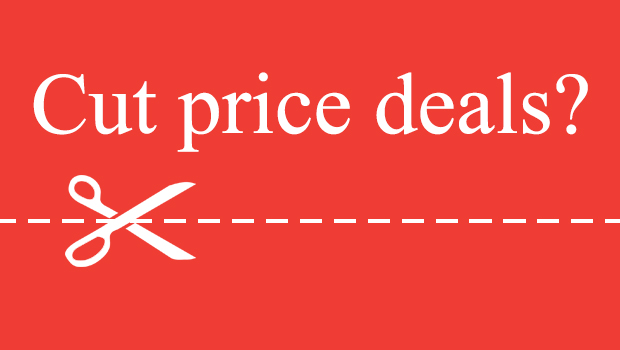Amazon Marketplace drop price parity clause, leveling the playing field
The news that Amazon has dropped its condition that bars all traders on its Marketplace from selling products cheaper elsewhere has been slow to filter through the trade. Perhaps because it was made in late August, before much of publishing had returned from its summer break, Amazon’s move has fallen below the radar somewhat. But this is a potentially significant development that raises plenty of wider issues about pricing in the digital age—as well as some interesting new opportunities for publishers.
Amazon’s price parity clause had been unpopular right from its introduction in Europe in 2010. Amazon had argued that it was essential if its customers were to feel confident that they weren’t missing out on cheaper prices elsewhere, but Marketplace traders—who number a staggering two million around the world—felt it was restrictive. Their case was picked up by regulatory bodies, first in Germany and then in the UK, where the Office of Fair Trading started an inquiry into whether the clause was anti-competitive. It is likely that with the investigations closing in, Amazon saw the writing on the wall and pulled its clause voluntarily, and before it was forced to do so. Certainly the OFT is now likely to wrap up its investigation, satisfied that the issue has been resolved.
The outcome is a relief for Marketplace sellers like small traders and other online retailers, who will now be free to price as they like on Amazon, their own websites and anywhere else. One of those is FirstyFish, Firsty’s eBookstore for publishers and that offers lots of flexibility in selling to consumers. Firsty is committed to making the site an even better known and appealing option for those seeking eBooks, and it can provide an important extra revenue channel for publishers over the next few years. The site has also been re-developed and launching in the Autumn with a new catalogue of over 600,000 eBooks.
Publishers might also be encouraged to sell their print and digital content direct to consumers on more competitive terms. They may not be inclined to offer prices as low as Amazon’s, but they will be emboldened to go cheaper in their D2C operations. Publishers are getting better and better at establishing their own online communities and engaging with them, and their sales through their own websites and affiliated ones should continue to rise.
For publishers, Amazon’s clause removal is another reminder of how complex an issue pricing can be. The debates about the rights and wrongs of wholesale and agency models and the e-book price collusion cases brought against Apple and publishers in Europe and the US rumble on, but two conclusions from these sagas and the price parity clause case can already be made. One is that ruling bodies will not allow giants like Amazon and Apple to simply dictate their own terms. Another is that smaller retailers of books and eBooks have got a bit of protection and power back, even if Amazon remains extremely dominant in both book and eBooks retail.
But in many ways, little will change in pricing after Amazon’s move. Sellers’ prices on the Marketplace are likely to remain lower than anywhere else, as competition is fierce and Amazon customers expect good value. Many traders will still offer their best prices on the platform because they don’t want to risk disgruntling Amazon, even though the parity clause has been pulled.
What’s more, Amazon’s aggressive discounting and its clout on terms are such that it will still comfortably price-match on most products. A glance at Amazon’s top sellers usually reveals that the online retailer is cheaper than any of its Marketplace sellers, and often by a substantial margin. Any retailer that does manage to undercut Amazon on price is probably losing money on a sale. It is worth noting, too, that the price parity clause is still firmly in force in the US, where Amazon’s sales and influence are greatest.
Whichever way you look at it, the biggest beneficiaries of the shakeout from Amazon’s move will be book buyers. With the rules on competition relaxed the battle to offer the cheapest prices will only intensify, so customers will enjoy more choice and discounts than ever. That, though, might not be so appealing to either publishers or retailers, who will face even more pressure on their margins as prices drive down.
But if publishers are able to improve their direct to consumer operations, then they can attract more sales on their own terms. If they can create even more must-have content and continue getting better at marketing and selling it, then D2C will become a really significant channel. Firsty’s package of D2C tools can make all the difference here, and because entry costs are low, flexibility is high and plenty of support is on hand, it is an attractive, low-risk option for the smallest of publishers. There’s a host of features and functions to make publishers’ eCommerce a compelling proposition, and paired with their own expertise and market knowledge, it can keep customers coming back for more again and again.





